Ask Ethan: Is Spacetime Really A Fabric?
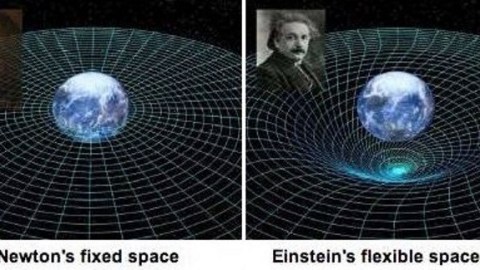
In General Relativity, even space and time themselves aren’t what they seem.
Gravity might have been the first fundamental force ever discovered, but in many ways, it remains the least-well understood. We know that it’s always attractive, and that any two masses in the Universe, no matter where they are, will experience its force. When Einstein concocted his general theory of relativity, one of the great advances was to recognize that space and time were combined into a single entity: spacetime. Another was that the presence of matter and energy curved the very fabric of this spacetime, and that curved spacetime, in turn, dictated how matter moved. But is this picture right? Mariusz Wroblewski is skeptical, asking:
I’d like somebody to finally acknowledge and admit that showing balls on a bed sheet doesn’t cut it as a picture of reality.
I freely acknowledge and admit it. As ubiquitous as pictures of bent sheets or coordinate systems are, they aren’t exactly reflective of the reality we inhabit.
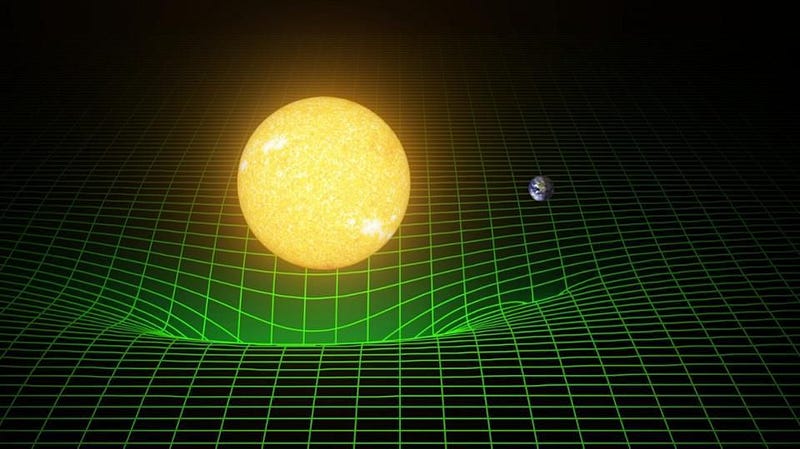
If you’ve ever seen a picture of a bent, two-dimensional grid with masses on it representing space, you’ll know this type of illustration is extremely common. It appears to depict the fabric of space as being curved by the presence of mass, and therefore, any other particle traveling along this fabric will have its path bent towards this gravitational source. The larger the mass and the closer you get to it, the larger the curvature, and therefore, the larger the bending.
This appears to line up, at least intuitively, with the experiments and observations that have taken place to verify and validate General Relativity over the past nearly 100 years. From the bending of background starlight during a total solar eclipse to the effect of gravitational lensing today, at least qualitatively, the picture appears to agree.
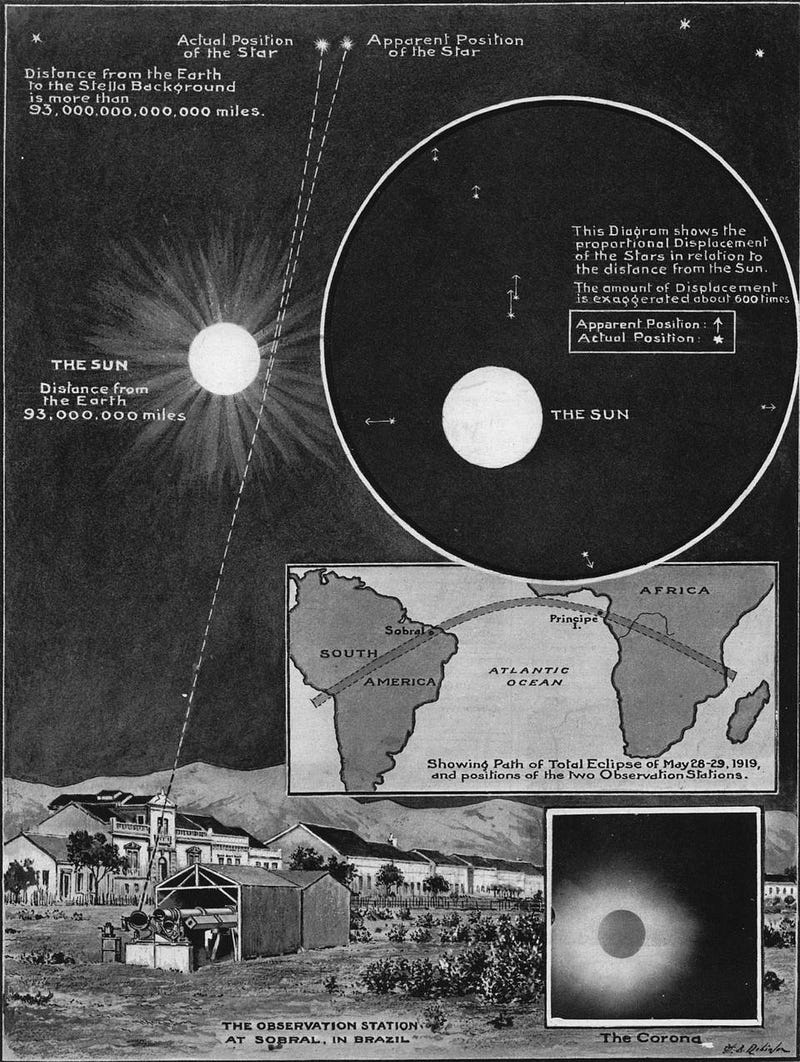
But what would such a picture actually imply? If space is like a fabric, how does mass curve it?
It appears as though a mass somehow gets pulled “down” onto the fabric, and then the other particles traveling through that space are pulled “down” by some unseen, mysterious force as well. Clearly, this can’t be right, because there’s no external gravitation at play at all! Additionally, the grid lines curve away from, rather than towards, the mass, which also can’t be right, especially if gravity is attractive.
Gravity simply is, and it’s merely that the equations that describe General Relativity are geometric in nature. The idea that mass-and-energy curves space can be right, even though this naive visualization must be wrong.
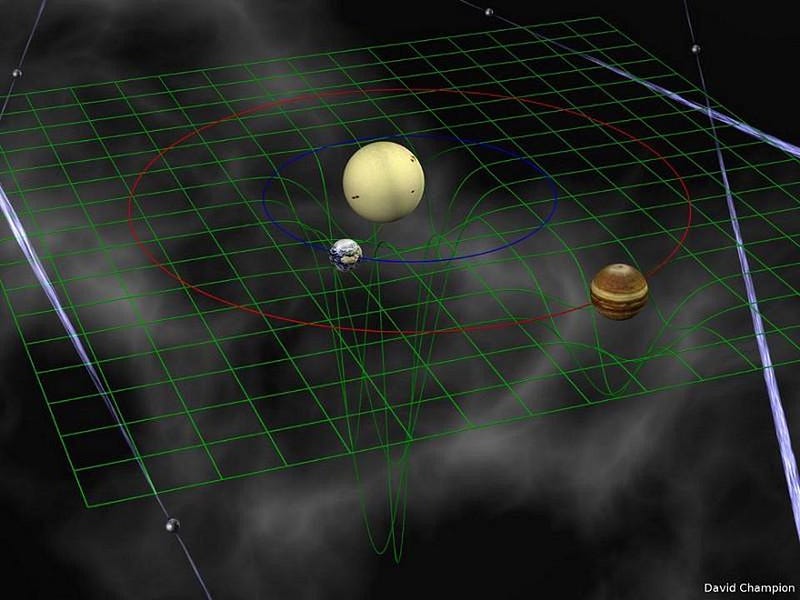
Instead, we can do better by going to the correct number of spatial dimensions: three.
Imagine, to start, that we have completely empty space. There are no masses nearby; there’s no radiation; there’s no dark matter, dark energy, neutrinos, or anything else that might cause this space to curve. There’s also no intrinsic curvature.
Instead, just imagine that space is flat, static, and empty. If we insisted on drawing a grid, like a mathematical overlay, atop space itself, here’s what it would look like.
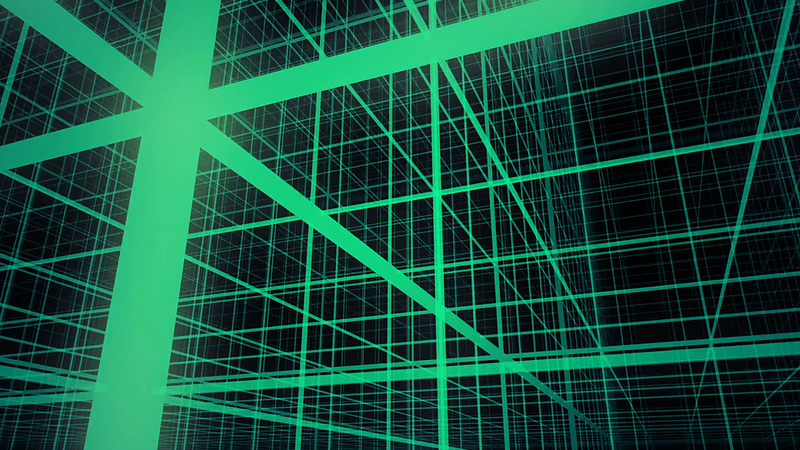
Now, let’s put a mass down in this spacetime. The mass has got to curve spacetime, but it isn’t actually a fabric: it’s simply the nothingness that makes up the empty Universe itself. The equations of General Relativity tell us how this curvature works, geometrically, but they don’t tell us how to visualize it.
One brilliant way to do so, however, is to draw your grid lines as though they represent the force experienced by a negligibly-massed, pressure-free dust particle that’s at rest with respect to the new mass. The greater the force that particle would experience, the greater the spacetime curvature. If we were to draw that out, we’d arrive at a very different, potentially more useful picture.
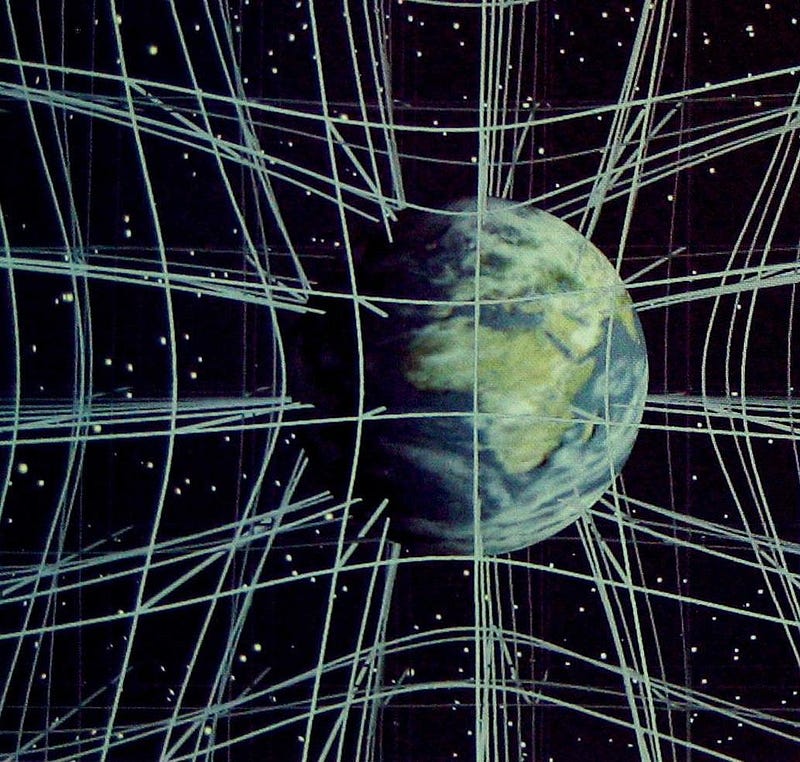
The biggest problem with this picture is that it’s difficult to draw!
Thankfully, with the advent of computer animation, we can visualize how space itself curves even with objects in motion. Remember, it isn’t actually a fabric, but rather takes up the entirety of the Universe. Spacetime simply is: it’s what’s left over when we take everything in the Universe away that we’re capable of taking away. When we put things like masses down in the Universe, spacetime is still there, too, but its properties are altered by whatever it is that’s inside it. The larger a mass you put inside it, the more that spacetime gets curved.
This is true even of a single mass that we simply move around. It could move in a straight line or along a curved path; it could move naturally (because of the motion of other masses) or artificially (because an external force moved it). Either way, it doesn’t make much of a difference. The real issue is that as masses move through space, the geometry describing spacetime changes.
As a result, the objects residing in that space, whether they’re massive or massless, will change their motion in response to the presence and properties of all the matter and energy within it. John Wheeler’s explanation, that mass tells space how to curve, while curved space tells matter how to move, still holds.
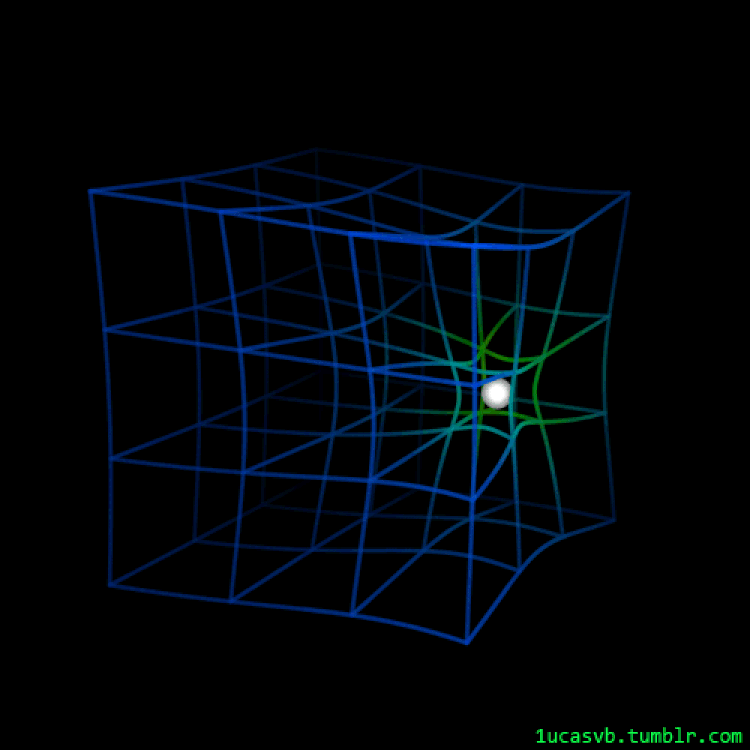
You can talk about space as a fabric, but if you do, be aware that what you’re doing is implicitly reducing your perspective down to a two-dimensional analogy. Space in our Universe is three dimensional, and when you combine it with time, you get a four dimensional quantity. When it comes to the notion of spacetime curvature, this is what General Relativity refers to.
But under no circumstances should you conceive of space as though it’s a material, physical thing; it isn’t. This is only a mathematical structure that we can write down equations to describe: the equations of Einstein’s General Relativity. The fact that matter and radiation respond to that curvature in the exact ways that the equations predict validates this theory, but it doesn’t mean that space is actually a fabric.
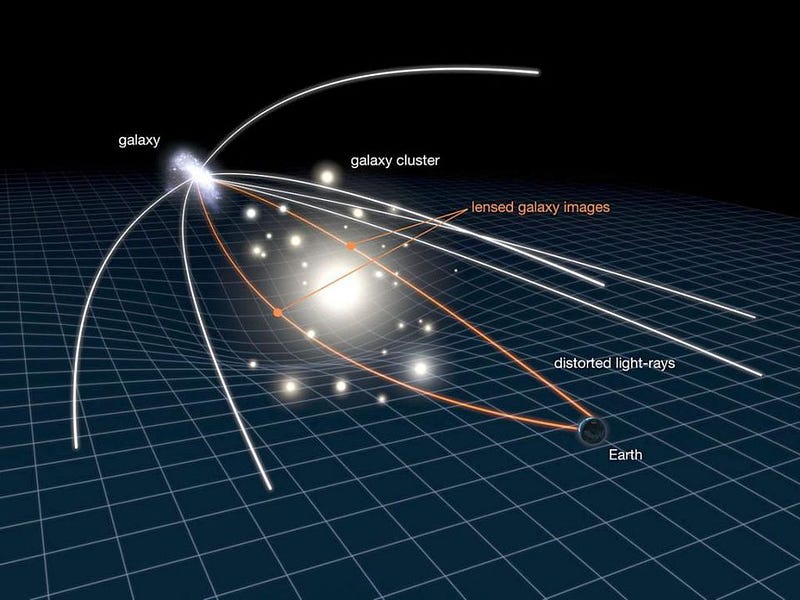
We also talk about the expanding Universe in the context that ‘the fabric of space is stretching,’ even though there is no fabric and it isn’t really stretching, or for that matter, changing in any way. What’s happening is simply that the distance between any two points in the Universe is changing according to a particular set of rules in the context of General Relativity. Galaxies, like raisins embedded in a loaf of baking bread, expand away from one another. The wavelength of radiation gets longer too, as though the length of the wave crests and troughs expanded away from one another too.
But in reality, there isn’t any fabric causing the expansion. In the raisin/bread analogy, the raisins (galaxies) are physically real, but the bread (fabric of space) is just a visualization.
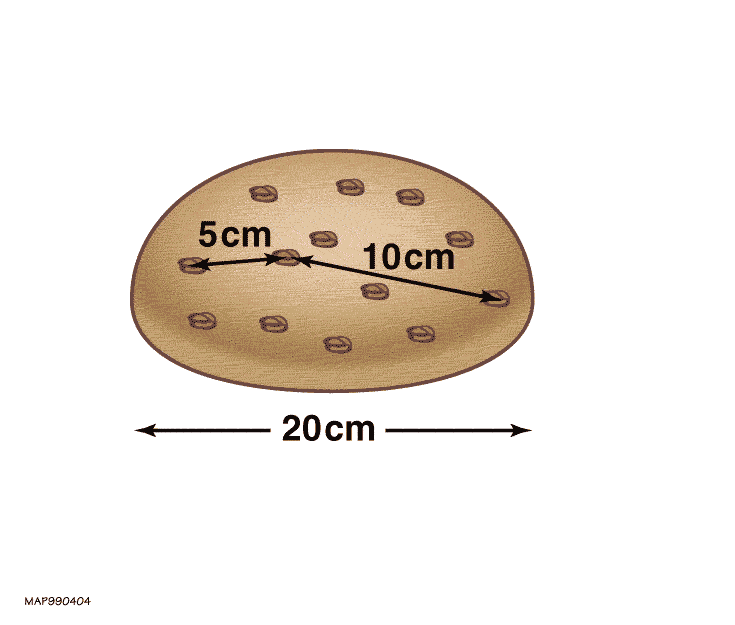
One of the most paradoxical ideas to wrap your head around in all of physics is that the equations that describe the Universe are just that: equations describing things we can physically observe. We can no more observe the ‘fabric of space’ than we can observe the nothingness of empty spacetime; it simply exists. Any visualization we attempt to assign to it, whether it’s a 2D fabric, a 3D grid, or a baking ball of dough, is just that: a human-inspired creation. The theory itself doesn’t demand it.
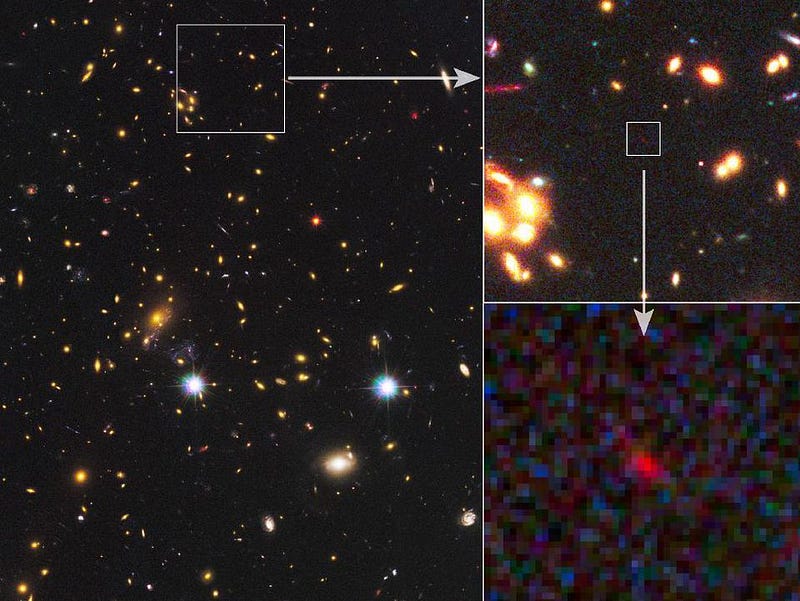
What we can observe, however, are the physical objects — the matter and radiation — present within that space. Those are the entities we can measure, and it is the predictions for the behavior of those objects that enables us to test theories like Einstein’s General Relativity. We don’t do very well at accepting mathematics for what it is, so we choose to make analogies to help us picture what’s happening with the Universe. The success of General Relativity rises and falls with observations and measurements. We can observe the measurable consequences of this theory, but not the actual structure of spacetime, even if it’s predicted by underlying theory itself.
All analogies, in this regard, have limitations and flaws. We can choose a visualization that’s less wrong, perhaps, than a 2D picture of a bent fabric, but there is no correct answer. General Relativity tells us what the Universe does given matter and energy distributed in a specific way, and our observations are consistent with it. We can choose to visualize it in whatever way makes the most sense to us, but all visualizations are inherently flawed. The best we can do is try to comprehend the Universe, as puzzling as it may be, as it actually is.
Send in your Ask Ethan questions to startswithabang at gmail dot com!
Ethan Siegel is the author of Beyond the Galaxy and Treknology. You can pre-order his third book, currently in development: the Encyclopaedia Cosmologica.




